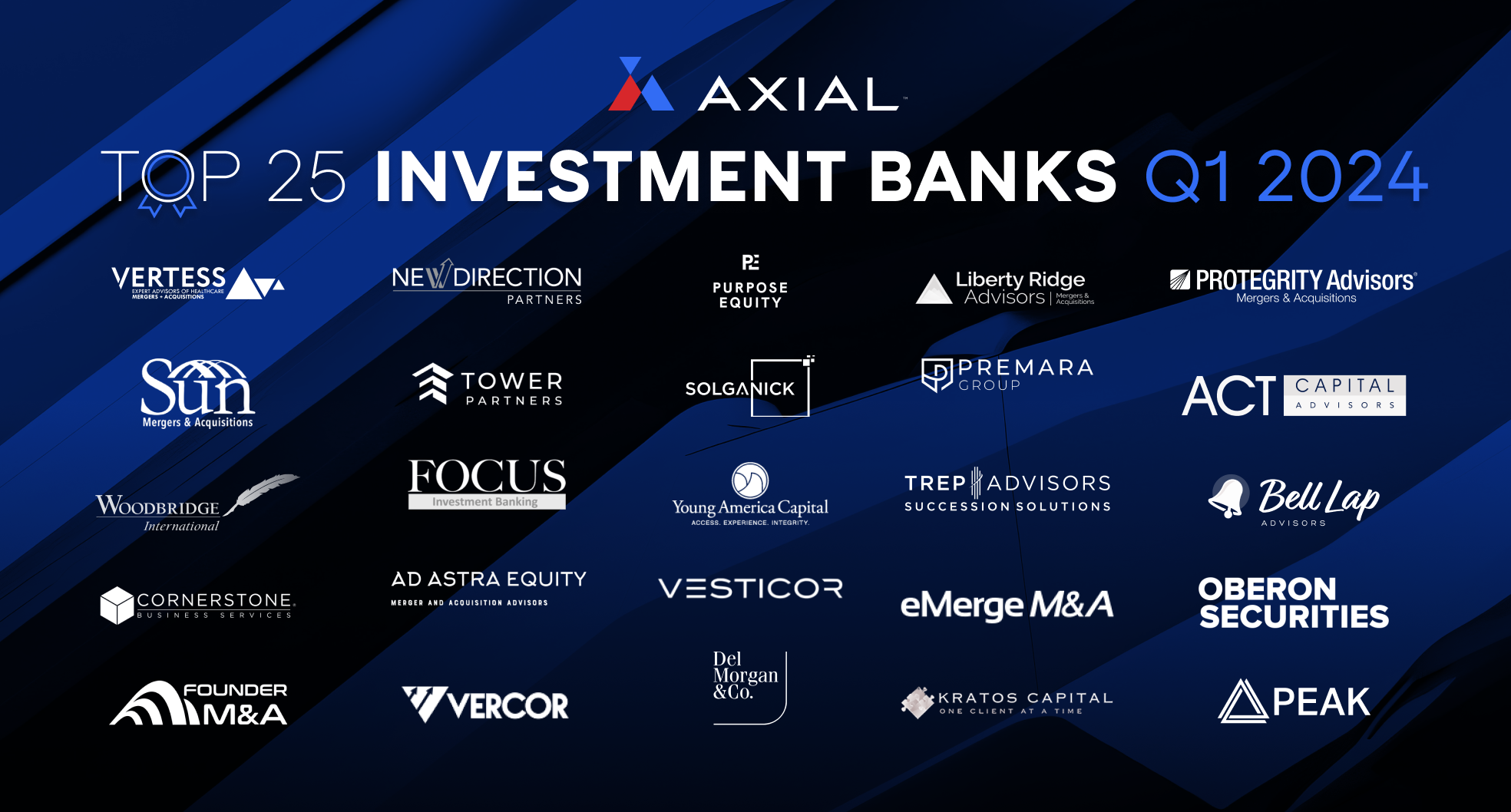
Top 25 Lower Middle Market Investment Banks | Q1 2024
Axial is excited to release our Q1 2024 Lower Middle Market Investment Banking League Tables. To assemble this list, we…
The ugly secret of the M&A business is that most deals don’t work, at least not by the only yardstick that matters to a client: value creation. According to the Harvard Business Review, some 70-90% of all deals fail to achieve their intended results. And for smaller deals and middle market buyers, the rate can be even worse.
Acquisition integration is a distinct yet critical component of the M&A process — and the advisor’s last key to unlocking a deal’s potential.
Advisors on both sides of the table need to know what it takes to make an acquisition succeed, not just close. Only with that foundation can they get the most value for a company that they are selling or prepare a client for achieving it when buying.
At first look, it may seem the integration process is only relevant to the buy-side investment banker or advisor. Not so. On the sell side, better awareness of the potential integration opportunities and challenges should lead to:
For those advising on the buy side, incorporating the integration team early on in the transaction process will lead to several good things:
Step one in gearing your client up for a truly successful deal is to make sure he or she understands that merging two companies is not like running one big one. Running a company is primarily about maximizing existing assets, be they tangible or intangible. Merging two companies is about managing change. The objectives are different; the skill sets are different; the demands of time and attention are different.
One sure foundation for creating deal success is learning about the main causes of past deal failures. There’s no shortage of cases. Look at AOL-Time Warner for strategic logic gone awry. Look at Mercedes-Chrysler or Sprint-Nextel for cultural mismatch. Look at Quaker Oats-Snapple or eBay-Skype for operational fails. Knowing why deals fail is a good starting place for keeping yours off the list.
Advisors on both sides of the table should amp up their attention to strategic and operational due diligence, addressing the practical mechanics of how things get done. This kind of DD checklist comes from operations or integration professionals, not from lawyers or accountants. It’s one thing, for example, to know that the size or structure of a sales team; it’s another thing altogether to know how they actually sell. Think of the salesperson for IBM computers in the early days (or even Apple nowadays). That’s not selling; it’s order taking. The two are very different.
In preparing selling presentations, explicitly addressing integration factors can give a buyer a clearer view of the path to value. That should result in higher prices on the sell side and reduced risk on the buy side. Describe how the company functions, not just what it does. Pay close attention to the flows of information as well as the flows of production. Any attribute of a client that lies at one end of the spectrum of possible approaches is an integration issue and needs to be laid out in detail.
Pro forma financials will also benefit from integration expertise, shaping more accurate inputs for sales growth or cost cutting or the time that such changes will take to achieve. Similarly, an effective integration effort will require a dedicated team working over a period measured in months, perhaps years. That can be a significant cost item. Underfunding it can lead to prematurely abandoning the integration process and potentially a loss of value.
On the buy side, it is important when preparing pro formas to include KPIs that measure progress against the strategic objectives of the deal. Often the KPIs chosen are the buyer’s normal financial yardsticks, but these may not be the right ones for monitoring the desired changes.
A lot of M&A is fact-based: hard stuff like audited financials, specific regulations, and precise contract language. But don’t downplay so-called soft components like corporate culture, either. Mismatched cultures have drained the value out of otherwise good deals over and over again for years.
Slightly oversimplified, culture is “the way we do stuff around here.” It encompasses serious things like how the leadership leads, how decisions are made, and how communications are conducted. But it also includes more subtle things: What are the unwritten hierarchies? How does scuttlebutt flow? What is the role of meetings? Is “Reply All” the norm? Is the office layout collegial or separatist? Are the production floors clean and orderly? It’s all culture, and it can make or break a deal.
Advisors who are attuned to how deeply integration needs to be woven into the tapestry of a deal will better serve their clients and, in fact, tee up easier and better deals for themselves.
Start by making sure your client — on either the buy side or the sell side — knows what a difference focused, dedicated integration can make in a deal and therefore the role it plays in attaining value. This is particularly critical for smaller and less frequent acquirers. Then, if you need outside help on specialized due diligence, corporate culture, or the integration issues in creating achievable pro formas, get it. If your client needs help on integration road mapping, help him or her get it. Doing so will help you help your clients unlock the value of their deals. That should be good for all sides: seller, buyer, and advisor.
